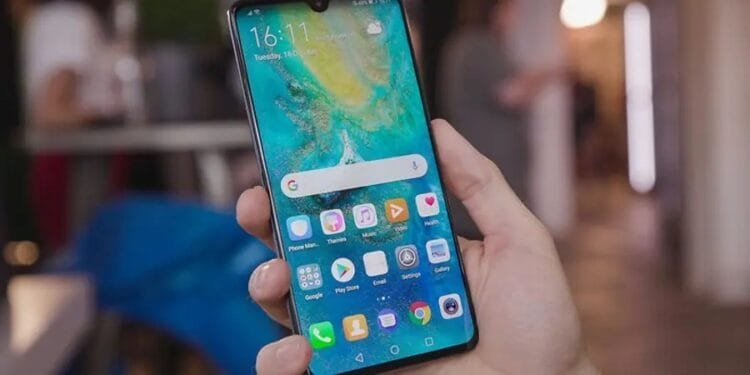RAM and Storage
When purchasing a smartphone, two crucial factors to consider are RAM and storage capacity. These elements significantly impact the device’s performance and usability. RAM (Random Access Memory) is essential for multitasking and running applications smoothly. It ensures that the phone can handle multiple operations simultaneously without lag. A smartphone with at least 6GB of RAM is recommended, allowing for fluid and responsive performance even with several apps open at once.
In addition to RAM, storage capacity plays a vital role in determining how much data you can store on your device. With the growing size of apps, photos, videos, and other media files, having ample storage is necessary. A minimum of 128GB of internal storage is now considered essential for most users. This capacity provides sufficient space to accommodate a wide range of applications, high-resolution photos, and HD videos.
If you are someone who relies heavily on your smartphone for various applications or stores extensive data, consider opting for devices with higher RAM and storage capacities. Phones with 8GB or more RAM can provide even better multitasking capabilities, while storage options of 256GB or more can cater to extensive media libraries and data requirements. Additional features such as expandable storage via microSD cards can also be beneficial if you anticipate needing more space in the future.
Overall, investing in a smartphone with adequate RAM and ample storage capacity is crucial for ensuring a smooth and efficient user experience. This consideration will not only improve the phone’s current performance but also extend its longevity, making it a smart choice for long-term usage.
Camera Quality
In the age of social media and digital photography, the quality of a smartphone’s camera has become a critical consideration for many users. When evaluating a smartphone’s camera, it is essential to look beyond the surface-level specifications. High megapixel counts, while important, are not the sole indicators of good camera quality. Excellent lens quality, image stabilization, and advanced sensor technology all contribute to producing high-quality photographs.
One should also consider smartphones that offer multiple camera setups. Wide-angle lenses are excellent for capturing expansive landscapes and group photos, providing a broader field of view. Macro lenses, on the other hand, allow for close-up photography, capturing intricate details that the naked eye often misses. Telephoto lenses are indispensable for zooming in on distant subjects without compromising image quality. The combination of these lenses provides greater versatility, allowing users to adapt their photography to various scenarios and needs.
Furthermore, software enhancements such as AI-driven features, night mode, and portrait mode are increasingly significant. These features utilize computational photography to optimize settings automatically, ensuring that every shot is as clear and detailed as possible, regardless of the environment. Some smartphones also offer professional modes, giving users manual control over settings like exposure, ISO, and shutter speed for more personalized photo-taking experiences.
Ultimately, the choice of camera should align with your personal photography preferences and requirements. For those keen on capturing remarkably detailed images, a smartphone with a high-resolution primary camera and additional specialized lenses may be ideal. For casual photographers, smartphones with robust AI features and automatic enhancements can provide a hassle-free experience, producing stunning photos with minimal effort.
Battery Life
The battery life of a smartphone is a critical aspect that influences its overall usability, particularly for individuals who depend heavily on their device throughout the day. One of the primary factors to consider when assessing battery performance is the battery capacity, typically measured in milliampere-hours (mAh). For a more enduring phone experience, opt for smartphones equipped with a battery capacity of at least 4000mAh. This threshold generally guarantees that the device can sustain moderate to heavy usage without requiring frequent recharges.
Additionally, the efficiency of the phone’s operating system and its processor can markedly affect battery consumption. Modern smartphones are often designed with advanced power management systems that optimize resource allocation, thereby enhancing battery longevity. Hence, it’s prudent to research whether the potential phone model utilizes such technologies.
Another significant feature to evaluate is fast charging support. Fast charging capabilities can prove indispensable, especially in scenarios where time is of the essence. This technology allows users to replenish their smartphone’s battery swiftly, reducing the downtime associated with traditional charging methods. When combined with a robust battery capacity, fast charging ensures that users can remain connected and productive with minimal disruption.
It’s also worth considering other charging-related innovations like wireless charging and reverse wireless charging. While not as crucial as battery capacity or fast charging, these features can add an extra layer of convenience for users who might benefit from cord-free charging options or the ability to charge other devices on the go.
In sum, battery life is a pivotal criterion in selecting a smartphone, encompassing not just the battery’s capacity but also the availability of fast charging and other supplementary features. Ensuring that a smartphone meets these parameters will significantly enhance its functionality and user satisfaction.
Display Quality
The display quality of your smartphone plays a crucial role in enhancing your overall user experience, particularly if you frequently consume media on your device. One of the primary aspects to consider is the display resolution. Higher resolutions, such as Full HD (1080p) and 4K, offer clearer and sharper images and videos, making the viewing experience more enjoyable and immersive. A crisp display can significantly improve your interaction with various visual content, be it for streaming movies, gaming, or browsing photos and social media.
Additionally, the screen size of your smartphone also substantially impacts your media consumption. Larger screens provide a more expansive visual area, making it easier to appreciate details and immerse yourself in the content. However, the ideal screen size ultimately depends on your personal preference and how you balance portability with display real estate.
Equally important is the type of screen technology used. AMOLED and OLED displays are often preferred due to their vibrant colors, deeper blacks, and superior contrast ratios. These technologies enhance the richness of content, whether it’s high-definition videos or high-resolution images. For media enthusiasts, the vivid color reproduction and high contrast can make a significant difference in viewing quality.
When selecting your next smartphone, consider how often and in what context you will be using your screen. For instance, if you are an OTT content enthusiast, these display factors become even more critical to ensure an immersive viewing experience. By paying close attention to the resolution, screen size, and type of display technology, you can make a well-informed decision that aligns with your media consumption habits and preferences.
Build Quality and Design
When it comes to purchasing a new smartphone, the design and build quality undoubtedly play a significant role. The material used in the construction of the phone — whether it is glass, metal, or plastic — can greatly influence not only its aesthetic appeal but also its longevity. Glass, for instance, offers a premium look and feel but can be prone to cracking. Metal is often more durable and gives a solid, premium vibe, while plastic, although typically seen as less premium, can provide additional flexibility and resistance to breakage.
Moreover, advancements in smartphone design have made it possible for devices to offer additional features like waterproofing. Most modern smartphones come with an IP rating, which indicates their resistance to dust and water. An IP68 rating, for instance, signifies that the phone can withstand dust ingress and can be submerged in water up to a certain depth and time. This can be particularly useful if you frequently find yourself in environments where your phone might be exposed to the elements.
The overall feel of the smartphone in your hand is equally essential. A phone that looks sleek but is slippery or uncomfortable to hold can prove problematic in day-to-day use. Ergonomics should not be overlooked; a well-balanced and easy-to-grip device will offer a better user experience over time.
Ultimately, your choice in a smartphone should reflect not only your personal style but also your practical needs. Opting for a device that balances aesthetic appeal with solid build quality and additional protection features will ensure that you have a device that is both pleasing to look at and durable enough to withstand daily usage and unexpected accidents.
5G and Connectivity
As the world rapidly advances towards 5G technology, ensuring your next smartphone is equipped with 5G support is crucial for future-proofing your investment. 5G networks offer significantly faster internet speeds, reduced latency, and enhanced connectivity capabilities compared to their 4G counterparts. This means not only a better browsing experience but also smoother video streaming, more efficient online gaming, and quicker downloads and uploads.
Alongside 5G, it is essential to evaluate other critical connectivity features in a smartphone. Bluetooth 5.0 is a noteworthy inclusion, as it provides faster data transfer rates, extended range, and greater stability compared to previous Bluetooth versions. This is especially beneficial for wireless audio devices such as earbuds and speakers, ensuring a seamless connection with minimal interruptions.
Near Field Communication (NFC) is another valuable connectivity feature to consider. NFC facilitates contactless payments and easy data transfers between devices. With the rising popularity of digital wallets like Google Pay and Apple Pay, having NFC in your smartphone allows for secure, convenient transactions and interactions in the growing ecosystem of compatible devices.
Wi-Fi 6 is also an important component to look for in a modern smartphone. Wi-Fi 6, or 802.11ax, delivers faster speeds, enhances performance in crowded areas, and offers improved battery efficiency. This next-generation Wi-Fi standard ensures that your device can handle the demands of high-resolution streaming, extensive online gaming, and a multitude of connected smart home devices without compromising performance.
In conclusion, while 5G capabilities are a significant criterion, other connectivity features such as Bluetooth 5.0, NFC, and Wi-Fi 6 play crucial roles in providing a seamless and versatile user experience. These advanced technologies collectively enhance your smartphone’s connectivity, ensuring you stay connected and efficient in various scenarios.
Software Updates and Security
The frequency and reliability of software updates are pivotal aspects to consider when purchasing a smartphone. Regular updates from the phone manufacturer ensure that the device remains efficient and secure over time. Software updates often introduce new features and improvements, enhancing the overall performance and usability of your smartphone. More importantly, these updates play a critical role in maintaining the security of your device by addressing vulnerabilities and providing the necessary patches to protect your data.
When evaluating potential smartphone brands, it is essential to research their track record for delivering timely and consistent software updates. Manufacturers that are committed to offering regular updates demonstrate a dedication to user experience and device longevity. This commitment not only covers performance enhancements but also extends to security updates, which are equally imperative in today’s digital age.
Security patches are often released alongside the main software updates and are designed to protect your device from emerging threats. Without these updates, smartphones can become susceptible to breaches and malware, exposing personal and sensitive information to potential risks. Therefore, prioritizing a phone manufacturer that values security through regular updates can safeguard your data and enhance the lifespan of your smartphone.
Ultimately, a smartphone is an investment, and ensuring that it receives proper software support is key to maximizing this investment. A manufacturer’s history of providing dependable updates reflects their underlying quality and customer care commitment. By selecting a brand known for consistent updates and robust security measures, you position yourself to enjoy a device that remains current, secure, and efficient for longer durations.























